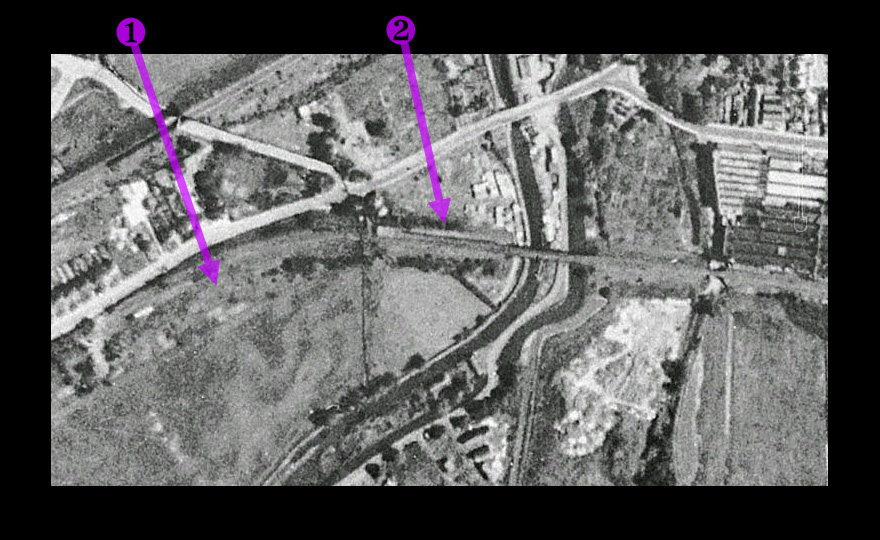The roundabout where Croxley Green station is located (arrowed). The new bridge intended to connect the Metropolitan line with the Croxley Green branch would have been built going from left to right behind the roundabout and the old station. The connection point wouldn't have been at Croxley Green station, which will remain closed and disused regardless of the extension going ahead or not, but further east, just shy of the new proposed station at Ascot Road. (photo: Jan 2012) |
||||
Taken from the same position as the photo above but zoomed in. (photo: Jan 2012) |
||||

|
||||

|
||||
|
©2010 Stephen Golding |
||||
The station on the left and the only sign of habitation - the pub - on the right. (photo: Dec 2005) |
||||
The street signage for the station was removed sometime in 2013/2014. (photo: Aug 2020) |
||||
The staircase up to the platform area in a rare state of not being completely overgrown. (photo: Dec 2005) |
||||
The staircase looking down toward street level. (photo: Dec 2012) |
||||
The station with its original platform and building while still in use. This is an eastward view. (Photo: Dec 1976) © Mark Dufton |
||||
The station with its original platform. Another eastward view. The Sun Printing site is on the left and the bridge taking the line over the canal is just beyond the end of the platform. (Photo: Apr 1976) © Mark Dufton |
||||
The station with its original platform. The site was moved eastward slightly due to the widening of the A412 and the platform was rebuilt on the other side of the track. © Richard Allen |
||||
Westward view (similar to above). The original platform was located on the right. The concrete supports are still visible, albeit mostly covered in ivy. The replacement platform was located on the left hand side; one of its lamp posts is still just about visible. (photo: Jan 2012) |
||||
Westward view of the end of the line. The tracks veering off to the left are heading toward the goods area. (photo: 1957 by J.J. Davis, from author's collection) |
||||
Westward view of the truncated end of the line. The walkway down to street level is hidden by the foilage on the right. (photo: Jan 2012) |
||||

|
||||

|
||||
Dec 2005 and the makeshift platform has been removed completely. The staircase to street level is behind the barrier on the left. |
||||
Eastward view in August 2020. One of the red lamposts has fallen over across the track and is just about visible on the right of the photo. |
||||

|
Two aerial views courtesy of Google Earth:

|
The top level dates from 1947, the lower level (moving your cursor over the image) from 2000 or so. 1- The goods yard that was served by the line. The tracks continued westward beyond Croxley Green station. |